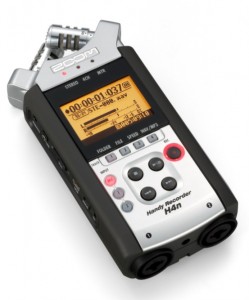
-Eloise Ristad
A Soprano On Her Head, p. 116-117
When we set out to learn a new piece, it can resemble a romance, and we’re often brimming with excitement.
Nonetheless, the outset of learning is when we instill enduring habits because the brain and body tend to imprint. That is, we begin with a clean inner slate, yet whatever we inscribe at first resists being erased.
So it’s crucial that we not only enjoy a new piece but also learn it deeply from square one.
4 Steps to Practice Unfamiliar Music
I developed the following process over a span of 25 years by applying research in human learning as I taught more than a thousand guitar students.
It’s designed to deepen our awareness of a composition while fostering our romance with it. And it centers on grasping artistic and technical components before we execute so that we form productive, flexible habits:
1. Get an overview
2. Map an interpretation
3. Map the technique
4. Execute your map
Below, I outline the basic elements. Please see Chapter 3 of The Musician’s Way for details.
Step 1: Get an Overview
- Establish an aural model of a piece (e.g., listen to recordings)
- Research background information
- Prepare a score:
-
- Divide a piece into sections
- Number the first measure of each line
- Estimate the final tempo
- Identify difficulties
- Translate any foreign text
-
An effective overview prepares us to dive into the fine points of a composition. It empowers us to flesh out detailed artistic and technical roadmaps while keeping the big picture of a piece in mind.
Step 2: Map an Interpretation
- Analyze and mark the score:
-
- Look over the entire piece and clarify any indistinct aspects of the mood, style, and form
- Grasp patterns of melody, harmony, and rhythm; locate phrase boundaries and dramatic peaks
- Focus on the first section and establish a “first draft” interpretation, employing the Principles of Artistic Interpretation covered in Chapter 2 of The Musician’s Way
- Pencil in expressive markings
-
- At an easygoing tempo, expressively vocalize the rhythms of the first section; repeat three times
- Move on to map the technique of that section
Our overarching goals in this step are to build understanding of the artistic content of a work as we establish provisional yet precise ideas for shaping figures and phrases. Those artistic ideas then inform our technical choices for the likes of fingerings and breaths.
Step 3: Map the Technique
In The Musician’s Way, I provide separate guidelines for singers and instrumentalists to map technique, which we don’t have space to cover here. Regardless, the keys to technical mapping are to:
- Work systematically:
-
- Tackle small portions
- Pinpoint ways to execute with optimal ease, aligning fingerings, breaths, bowings, diction and so forth with your interpretive map
- Incorporate mental imaging
-
- Convey your interpretation
When we achieve a clear technical map, we know exactly how we’ll execute musical figures and phrases to maximize ease and expressiveness.
Step 4: Execute Your Map
- Work with digestible portions
- Choose a comfortable tempo
- Feel ahead
- Be both artistic and accurate
- Solve problems
- Accurately execute portions three times in a row, and then link portions to form a complete section
When one section feels easy, map and execute subsequent sections, gradually linking sections together. Maintain the initial tempo throughout, increasing ease and expressiveness (if you can’t execute easily, you might need to choose more accessible music).
Self-record one or more sections to objectively evaluate your work.
Recommended Audio Recorders: Zoom H4n | Zoom H2n | Tascam DR-22WL
* * *
When an entire piece feels easy at your initial tempo, it graduates from the New Material zone to the Developing Material zone. (Learn more about the Five Music Practice Zones.)
Then, we increase the tempo, refine our interpretation, and, with solo music, memorize. Chapter 4 of The Musician’s Way covers practice strategies for the Developing Material zone.
The Musician’s Way is the only book to offer comprehensive practice and performance guidelines for musicians of all levels. Read reviews.
Related posts
Beautiful Repetition
The Key Mental Skill of Expert Musicians
The Problems with “Notes First” Practice
The Ultimate Practice Shortcut
© 2021 Gerald Klickstein
Adapted from Chapter 3 of The Musician’s Way
Photo via Pixabay


